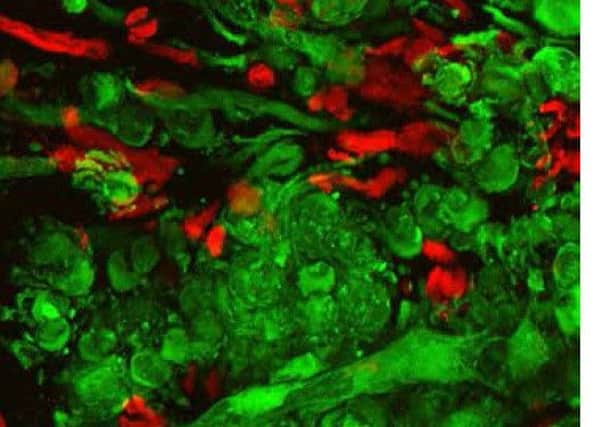Brain tumours to be 3D printed by Heriot-Watt researchers
This article contains affiliate links. We may earn a small commission on items purchased through this article, but that does not affect our editorial judgement.


Now Capital scientists will create the world’s first 3D printed brain tumours to help improve the understanding and future treatments of the devastating condition.
Using cutting-edge technology, a team from Heriot-Watt University will print a mixture of cells commonly found in brain tumours, combining them to construct a single tumour-like mass.
Advertisement
Hide AdAdvertisement
Hide AdDOWNLOAD THE EDINBURGH EVENING NEWS APP ON ITUNES OR GOOGLE PLAY
The printed tumours will include stem cells from a highly aggressive and incurable form of the disease called glioblastoma, which is the most common type of malignant brain tumour in adults.
These tumour-like constructs will mimic the characteristics of the glioblastoma more accurately than tumour cells grown in a plastic dish in a laboratory or animal tests, researchers say.
Dr Nicholas Leslie, a tumour biologist at the university, said: “We have developed a novel 3D printing technique to print brain tumour cells for the first time, cells that continue to grow rapidly, more closely mimicking the growth of these aggressive tumours in real life.
Advertisement
Hide AdAdvertisement
Hide Ad“Our goal is that this should provide a new way of testing drugs to treat brain tumours, leading to new treatments and speeding up the process by which new drugs become available to patients.”
Malignant brain tumours, such as glioblastoma, claim the lives of around 5000 people in the UK every year.
Dr Will Shu, a 3D printing expert working on the project, said: “The prognosis for newly diagnosed brain tumour patients is currently very poor and improvements have been very limited, in large part due to the failure in clinical trials of many new drugs.
“We hope our research will help develop a model that closely matches exactly the response of individuals’ brain tumours to drugs, allowing more effective treatment to be carried out for patients.”
Advertisement
Hide AdAdvertisement
Hide AdThe project is among a £4.3 million package of research initiatives across the UK, announced today by the Brain Tumour Charity.
Scientists at Edinburgh University’s Cancer Research Centre will examine how tumours become more aggressive to try to develop earlier detection techniques for brain tumours.
Another team from Edinburgh University has received a funding boost to look at parcels within cells that contain both DNA and protein, to see how these cells could be linked to causing glioblastomas.
Sarah Lindsell, chief executive of The Brain Tumour Charity, said: “Progress towards more effective treatments for brain tumours has been too slow for too long.
Advertisement
Hide AdAdvertisement
Hide Ad“We urgently need new ideas to bring hope to the thousands whose lives are affected every day by this devastating disease.
“That’s why we are delighted to be funding this pioneering project at Heriot-Watt as part of our major research investment announced today.”